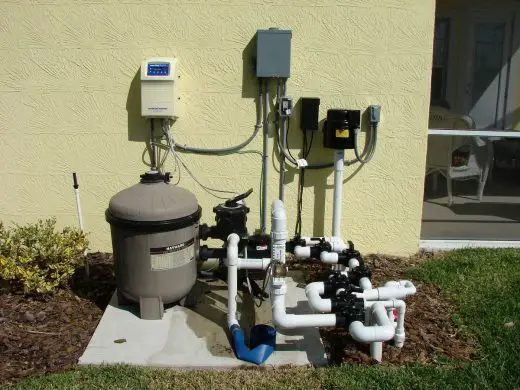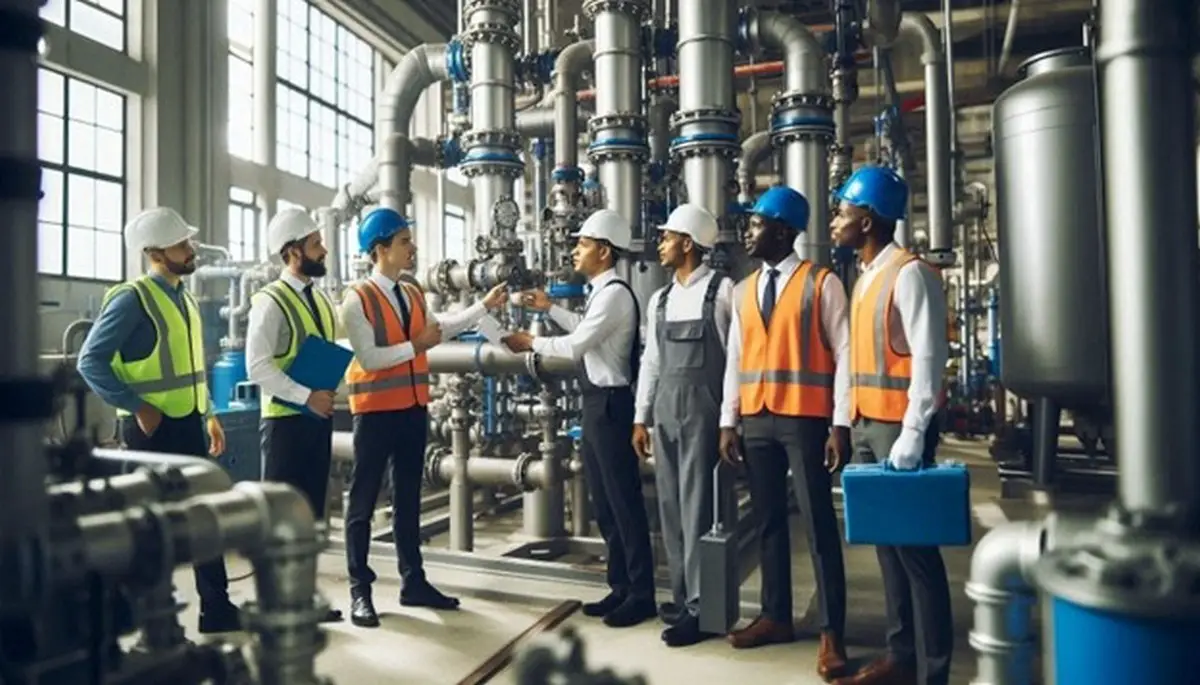How innovative water treatment systems can enhance green building certification, Avoiding home pollutants tips, Online property advice
How Innovative Water Treatment Systems Can Enhance Green Building Certification
4 June 2022
Sustainability is baked into modern building designs in order to appeal to modern audiences and, more importantly, stay on the right side of regulators.
Water treatment systems need to be considered carefully in this context, as earning relevant certifications for eco-friendliness is contingent on their inclusion in construction projects.
Thankfully there are lots of different technologies at play here, so let’s talk through just a few.
Cutting-Edge Nanofiltration Technologies in Green Buildings
One area of significant development in terms of water treatment is nanofiltration, which uses membranes to remove contaminants at the molecular level. In this $300 billion market, it’s intriguing to see that the smallest apertures are having the biggest impact.
What is Nanofiltration?
Nanofiltration sits between ultrafiltration and reverse osmosis on the filtration spectrum. It can selectively filter out particles as small as 0.001 micrometers.
It removes a wide range of impurities, including:
- Organic molecules
- Bacteria
- Viruses
Unlike reverse osmosis, nanofiltration retains essential minerals in water, making it ideal for green building applications where balanced mineral content matters.
Applications in Green Buildings
Green buildings aim to reduce their environmental footprint through sustainable practices and materials. Incorporating advanced nanofiltration systems aligns with these goals by improving water quality and reducing waste.
Key benefits include:
- Enhanced energy efficiency due to lower operating pressure compared to reverse osmosis.
- Reduced chemical usage for disinfection purposes.
For example, in the case of an office building featuring this tech, you’d get a setup that not only recycles rainwater but also purifies it. This ensures potable water without excessive energy costs or harmful chemicals, which is great news for sustainability enthusiasts and frugal business owners alike.
Integration with LEED Certification
LEED (Leadership in Energy and Environmental Design) certification requires stringent criteria regarding water efficiency and quality management. Using nanofiltration technology can help buildings achieve higher LEED ratings by meeting prerequisites such as:
- Reducing indoor potable water use.
- Treating greywater for reuse within the building system.
Moreover, incorporating dissolved air flotation technology alongside nanofiltration enhances solid removal from wastewater before final purification steps, contributing further towards meeting LEED standards.
Future Potential
The potential applications of cutting-edge filtration technologies extend beyond current uses. As more buildings incorporate IoT systems, smart sensors can monitor filter performance in real-time – optimizing maintenance schedules while ensuring top-notch efficiency on an ongoing basis.
Bioremediation Methods for Sustainable Wastewater Treatment
Bioremediation harnesses natural processes to treat wastewater. This sustainable method uses microorganisms to break down contaminants, making it an environmentally friendly option for green buildings. The market is already sizable, and will hit $28.92 billion by the time 2030 rolls around.
Understanding Bioremediation
Bioremediation employs bacteria, fungi, and other microorganisms to degrade pollutants into less harmful substances. These organisms metabolize organic matter, converting complex compounds into simpler ones that are easier to manage.
Key benefits include:
- Minimal chemical use.
- Reduced sludge production.
- Lower energy requirements compared to traditional methods.
Basically, a building’s wastewater treatment system will end up acting like a mini ecosystem where microbes do the heavy lifting of breaking down waste efficiently and naturally.
Bioremediation Applications in Green Buildings
Green buildings focus on sustainability and efficiency. Integrating bioremediation methods can significantly reduce their environmental impact by managing wastewater responsibly.
Applications involve:
- Treating greywater from sinks and showers.
- Processing blackwater from toilets using advanced microbial solutions.
For instance, a residential complex might install constructed wetlands – natural systems where plants and microbes work together to purify water. This approach provides aesthetic value while promoting biodiversity within urban settings.
Contribution Towards LEED Certification
Earning LEED credits involves meeting rigorous criteria related to water management. Implementing bioremediation techniques supports these goals effectively through:
- Innovative wastewater technologies that improve onsite water reuse.
- Enhanced water quality by reducing nutrient loads before discharge or reuse.
So a commercial equipped with biofilters would be capable of handling all its wastewater needs autonomously, leading towards higher LEED scores as well as allowing for the eco-conscious values of its business occupants to be fulfilled.
Future Innovations in Bioremediation
Looking ahead, advances in genetic engineering could further optimize microorganism strains for specific pollutant degradation tasks. Research continues into tailoring microbial communities precisely for different types of industrial effluents encountered in various building scenarios.
And as certain construction materials, such as concrete, get a bad rap where eco-friendliness is concerned, it’s good to know that other areas are undergoing significant, positive progress.
Renewable Energy-Powered Desalination Systems
Desalination has long been a solution for regions facing freshwater scarcity, a problem impacting over 2.7 billion people worldwide. However, traditional methods often come with high energy costs and environmental trade-offs. The integration of renewable energy into desalination processes transforms this technology into a more sustainable option.
Overview of Desalination Technologies
Desalination removes salts and other impurities from seawater or brackish water to produce potable water. Common methods include reverse osmosis (RO) and multi-stage flash distillation.
By powering these systems with renewable sources like solar, wind, or wave energy, we significantly mitigate their environmental footprint while maintaining efficiency.
Desalination Technologies Applications in Green Buildings
Green buildings emphasize reducing their dependency on non-renewable resources. Integrating renewable-powered desalination aligns perfectly with this objective by providing an eco-friendly water source.
Possible implementations involve:
- Solar-powered RO units on rooftops.
- Wind-driven mechanical vapor compression systems.
Let’s say you run a coastal hotel that utilizes its sunny location by installing photovoltaic panels to run its desalination unit, thus transforming seawater into clean drinking water sustainably throughout the year.
This is a money-saving method, an eco-friendly step and something that guests will really appreciate as awareness about the climate crisis grows. And as solar tech is getting more advanced, with modern systems easily topping the 30% benchmark in terms of efficiency, it’s not just desal setups that can be powered this way.
Enhancing LEED Certification Goals
Renewable energy-powered desalination directly helps with achieving higher LEED ratings under the Water Efficiency category.
Key contributions include:
- Providing onsite alternative water sources.
- Reducing reliance on municipal supplies.
For instance, an urban development project equipped with wind turbines specifically designed to power desal plants would have a consistent fresh-water supply which in turn makes the building more sustainable. Residents and regulators alike will appreciate this design consideration.
Future Innovations in Renewable Desal Technology
The future holds exciting advancements for renewable desal technology.
Emerging trends include:
- Hybrid systems combining multiple renewable energies for enhanced reliability.
- Advanced materials improving membrane longevity and efficiency.
For instance, we might get next-generation membranes that not only last longer but also require less frequent cleaning due to self-healing properties derived from nanotechnology, adjacent to what we touched on earlier in terms of its impact.
Innovative water treatment systems – Final Thoughts
In short, if you want to get your building certified as being in line with sustainability guidelines, you have to look into these water treatment systems.
Whether nanofiltration, bioremediation or renewably powered desalination is right for you, it’s important to know that you are making a choice informed by a sense of responsibility as much as profitability.
Comments on this guide to How Innovative Water Treatment Systems Can Enhance Green Building Certification article are welcome.
Water / Floods Articles
Water / Floods Posts
Buying Under Sink Water Filter for the Home?

How to Remineralize Reverse Osmosis Water
How to install a tankless water heater
Building
Residential Architecture Articles
Comments / photos for the How Innovative Water Treatment Systems Can Enhance Green Building Certification page welcome





